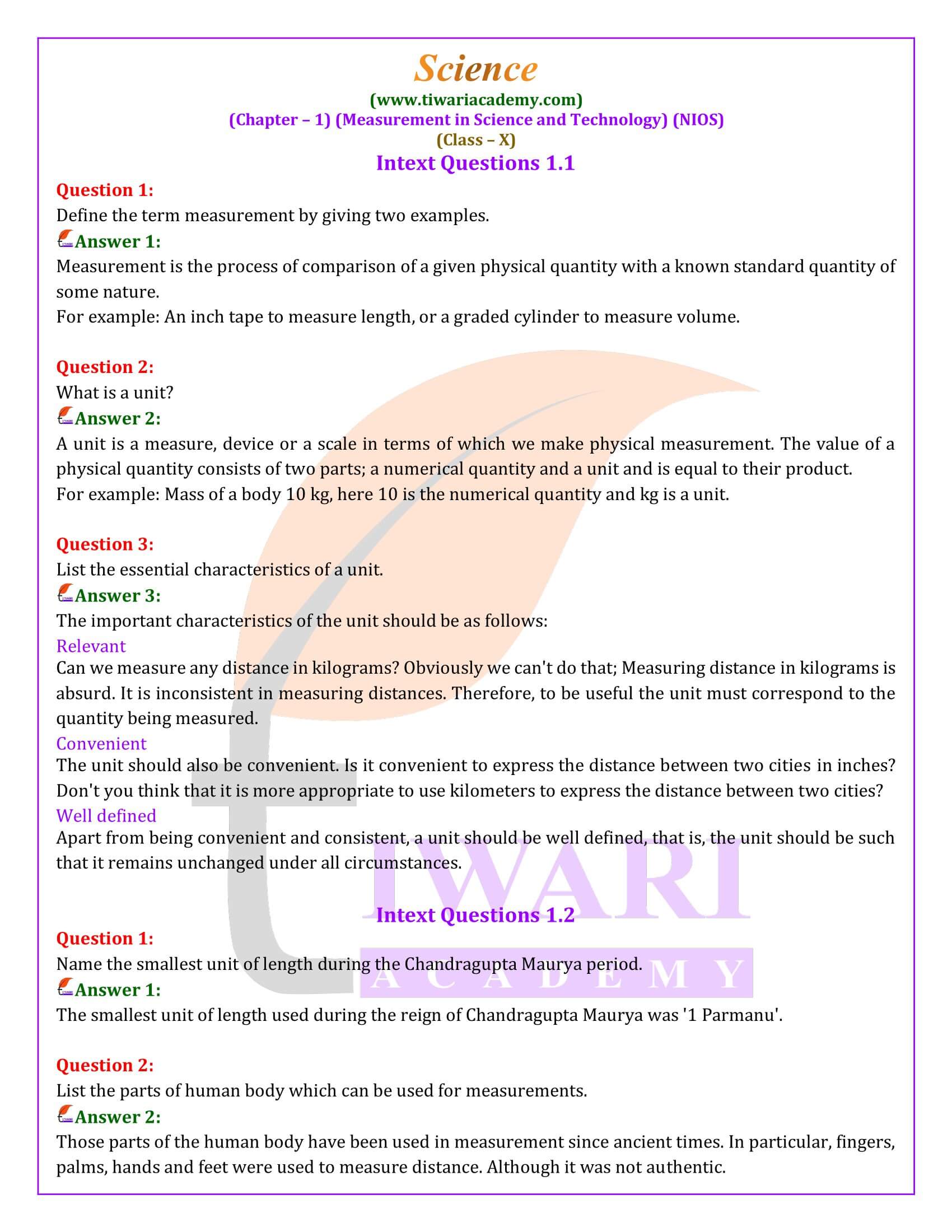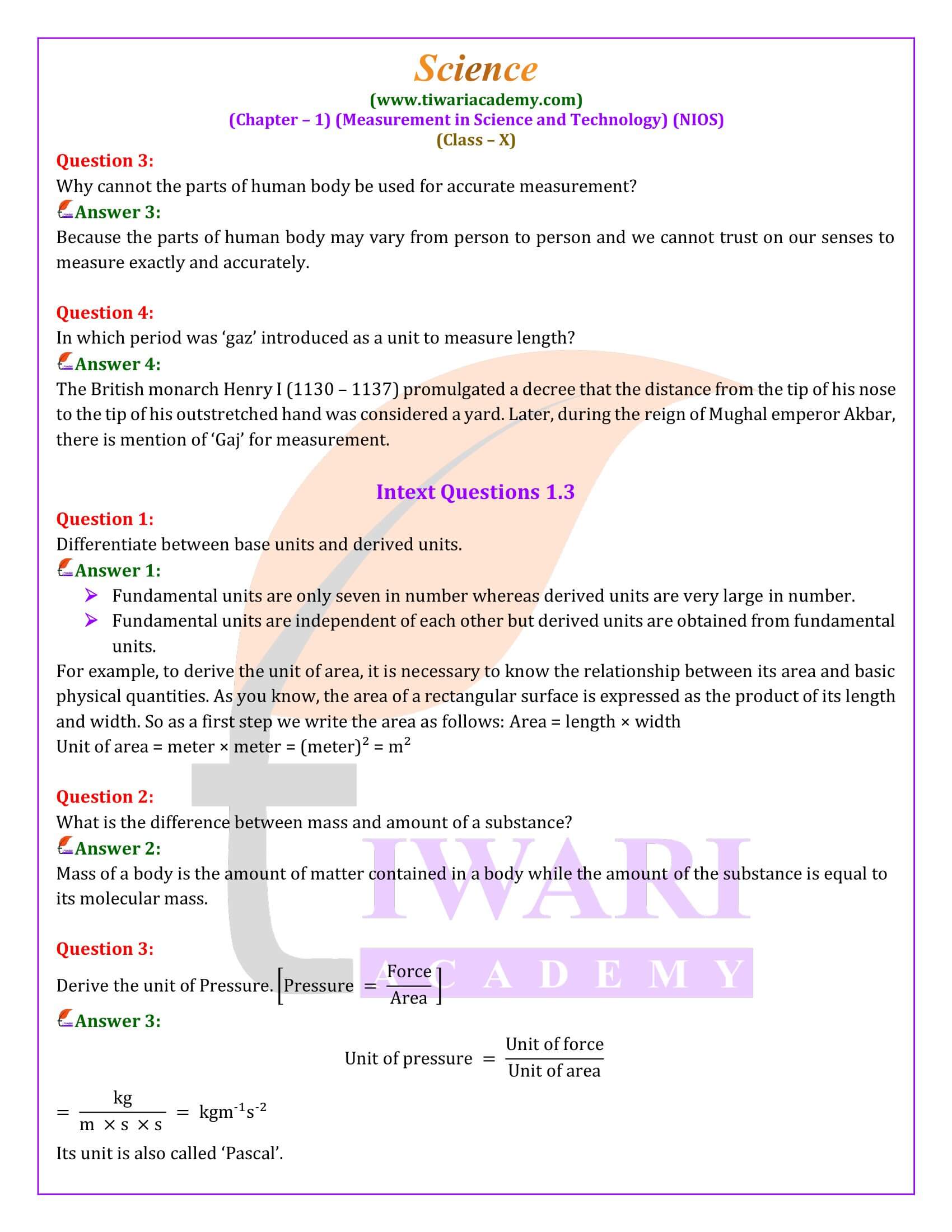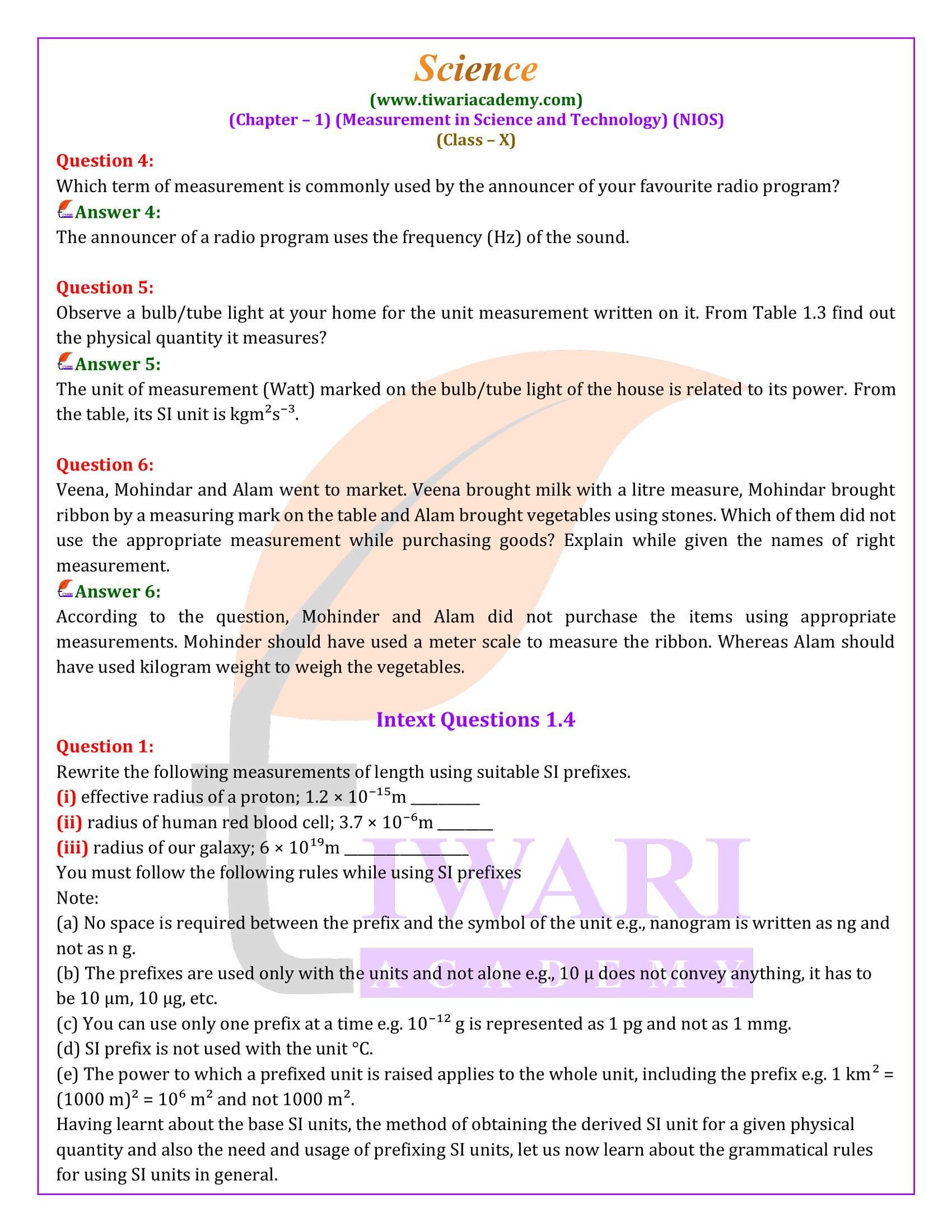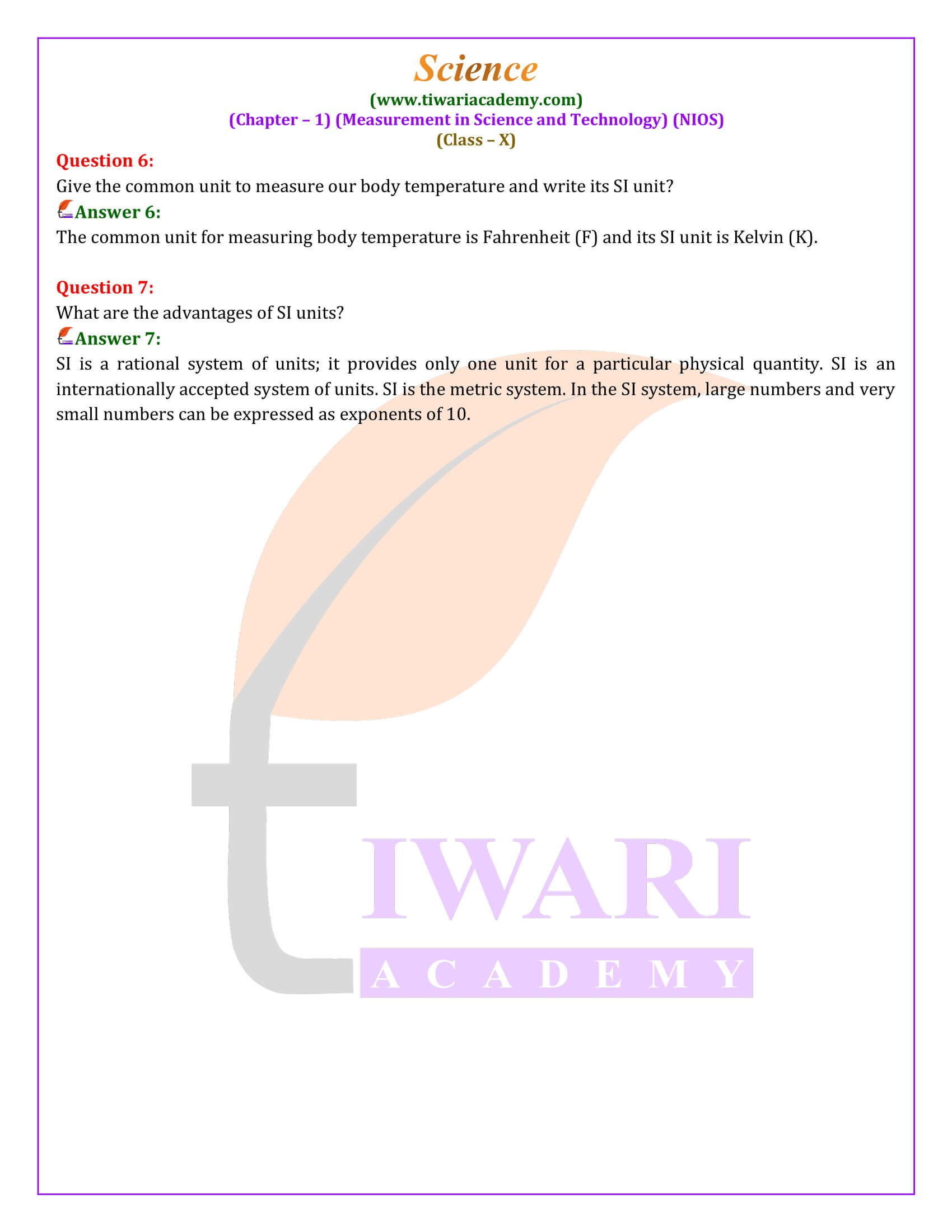NIOS Class 10 Science Chapter 1 Measurement in Science and Technology Solutions, Question answers in Hindi and English Medium. Get here answers of Science book chapter 1 used National Institute of Open Schooling.
NIOS Class 10 Science Chapter 1 Measurement in Science and Technology
Measurement in Science and Technology
NIOS Class 10 Chapter 1 has an in-depth exploration of measurement in science and technology, outlined in a comprehensive yet straightforward manner. This is organized into a structured format that encompasses a range of topics from the basic definition of measurement, its importance, the evolution of measurement systems, to the modern International System of Units (SI). Here is a summary in 700 words, distributed across six paragraphs as requested.
NIOS 10th Science chapter 1 Explanation
Measurement is an indispensable skill that is integral to various aspects of daily life, including cooking, shopping, and sports, among others. It involves comparing unknown quantities to known standards, enabling us to understand and navigate the world with precision and consistency. The essence of measurement lies in its ability to provide a common language for science and technology, facilitating the exchange of information and ideas across different fields and cultures. Whether measuring the length of a playground or the weight of a carton of books, the process of measurement is fundamentally about counting and comparison. NIOS 10th Science chapter 1 introduces Lord Kelvin’s quote, emphasizing the significance of measurement in transforming a basic understanding into a scientific one, underscoring the transition from qualitative to quantitative analysis.
The concept of a ‘unit’ plays a pivotal role in measurement, acting as a standard reference against which other values are compared. For a measurement to be meaningful, it must be expressed in a unit that is relevant, convenient, and well-defined. The chapter provides examples, such as using body parts in ancient times for measurements, to illustrate how units have evolved based on societal needs. This evolution highlights the necessity for a universal system of measurement to ensure clarity, consistency, and efficiency in communication and operations, both in everyday life and in the scientific community.
Historical Overview of NIOS Class 10 Science Chapter 1
The chapter 1 of NIOS Class 10th Science, delves into the history and development of measurement systems, recounting how ancient civilizations utilized various methods and units to measure physical quantities. It describes how the Egyptians established the standard cubit, and how rulers like the British King Henry I defined units based on their own physical dimensions. This historical overview points out the inherent challenges and limitations of such systems, including their lack of uniformity and accuracy, which led to confusion and inefficiencies, especially in trade and commerce. It underscores the need for a standardized system that would be universally accepted and applied.
In response to these challenges, the modern International System of Units (SI) was established, providing a coherent framework for global standardization of measurements. The chapter 1 outlines the seven base units of the SI system, which cover essential physical quantities such as length, mass, time, and temperature, among others. It explains how derived units are constructed from these base units to measure more complex quantities, and introduces the concept of SI prefixes to handle extremely large or small numbers efficiently. This system represents a significant advancement in the field of measurement, facilitating precise and consistent quantification across different domains of science and technology.
Common System of Units
The use of body parts as measurement tools is further explored through an engaging activity, encouraging readers to measure the length of an object using hand spans and digits. This activity not only illustrates the variability and inaccuracy of such measurements but also reinforces the importance of standardized units. The narrative then transitions to the necessity of a common system of units, illustrating how standardized measurements have historically been established, such as the cubit in Egypt and the yard in England, to bring uniformity and accuracy to measurement practices.
Overview of the SI Units
The chapter 1 of 10th Science for NIOS students concludes with a comprehensive overview of the SI units, including their definitions, importance, and applications. It explains the criteria for a useful unit, emphasizing relevance, convenience, and well-defined characteristics. The modern measurement system, including SI units, SI prefixes, and rules for representing SI units, is detailed, highlighting its global acceptance and the advantages it brings to scientific research, international trade, and everyday transactions. This system ensures that measurements are accurate, reproducible, and universally understood, facilitating advancements in science, technology, and various other fields.
The chapter 1 serves as a thorough introduction to the principles of measurement, its historical evolution, and the establishment of the International System of Units. It underscores the critical role of accurate and standardized measurement in the advancement of science and technology, as well as its indispensable presence in daily life. Through its detailed explanation of concepts, historical context, and practical applications, the document provides a solid foundation for understanding the significance and utility of measurement in our world.






